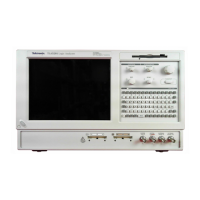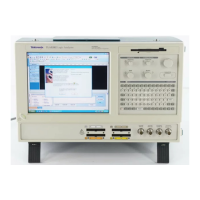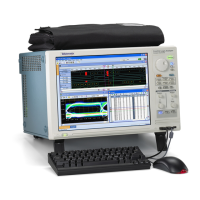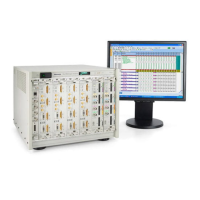Glossary Glossary
Hub
A USB device that provides additional connections.
Low-speed
USB operation at 1.5 mb/s.
mb/s
It is the transmission rate expressed in megabits per second.
NAK
A handshake packet indicating a negative acknowledgment.
Pulse Diagram
The Plot of the USB signals showin
g Annotations of J,K, EOP (E) , Idle (I), Cross-Over Points (Cov)
and Reference Points (Re f).
Reference point
Th
e simulation of ideal Cross-Over points, which helps calculate jitter.
Reflectometer
An oscilloscope capable of measuring impedance characteristics of the USB signal lines.
Sample Rate
It is the number of samples per second, expressed in Hertz (Hz).
Signal Direction Downstream
It is defined as the direction of data flow away from the host. A downstream port is the port on a hub
farthest from the host that generates downstream data traffic from the hub. Downstream ports receive
upstream data tra ffic.
Signal Direction Upstream
It is defined a s the direction of data flow towards the host. An upstream port is the port on a device closest to
the host that generates upstream data traffic from the hub. Upstream ports receive downstream data traffic.
Tier
The position in the hub where the device is connected to the system.
Test P oint
A device is classified as far end or near end depending upon the captive cable. A device with captive cable
is usually called as a far end device, otherwise as a near end device.
Test F ixt ure
It is the break-out board that helps in probing signals.
UUT
Called as the Unit Under Test. The unit can be a USB device, hub, port or a host.
214 TDSUSB2 Universal Serial Bus Measurements Package

